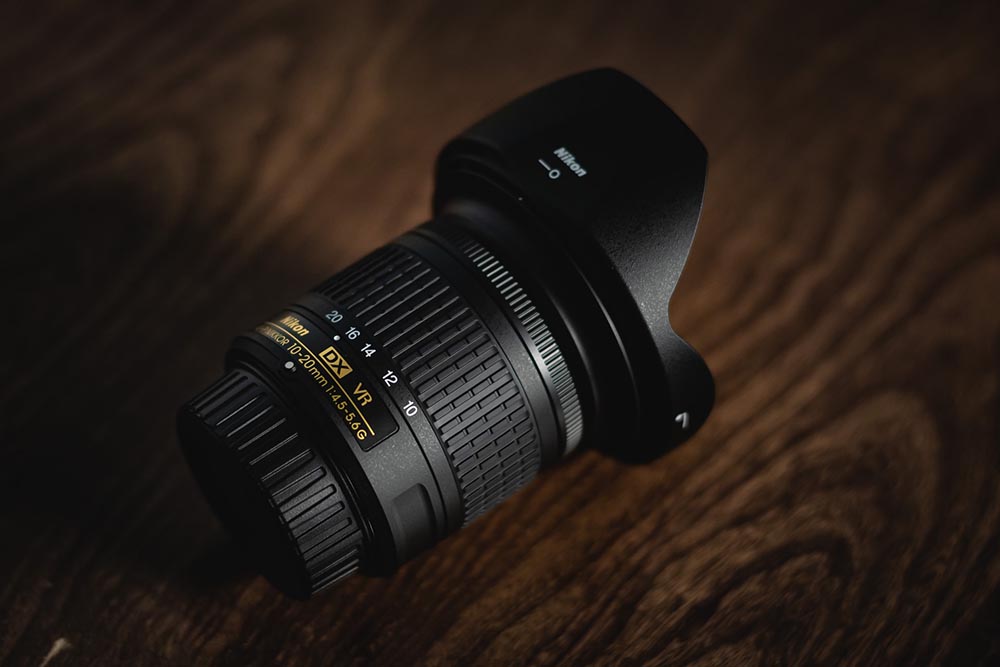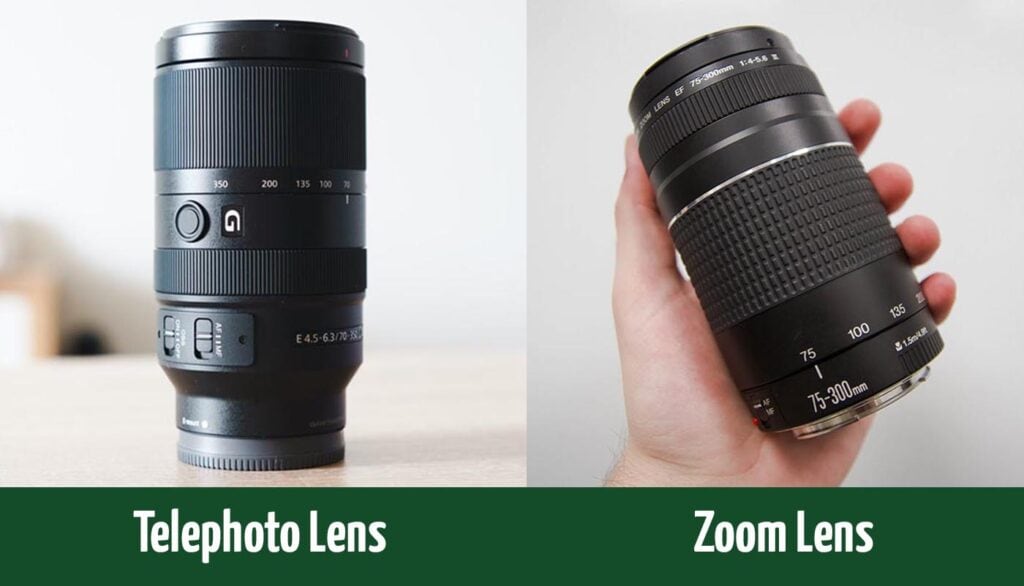What Is a Zoom Lens? Photography Basics Explained
Last Updated on

The zoom lens is one of two basic types of photographic lenses, with the other being the prime lens. A zoom lens is considered a staple in most photographers’ kit bags, and it tends to be the lens that gets most amateurs excited.
A zoom lens is a type of photographic lens that enables the user to select from a range of focal lengths. Essentially, it enables the photographer to vary the “distance” of the subject in a photo from far away to very close up. It allows you to zoom in on an object so that it appears closer. How far the subject appears depends on the focal length, measured in millimeters, and different zoom lenses offer different focal length ranges. The zoom lens differs from the prime lens, which is the other main type of photographic lens, because it has a fixed focal length that cannot be changed.

How Camera Lenses Work
A photographic lens is a series of curved glass plates. These project the viewed image onto the camera’s sensor. The distance from the plate to the sensor determines how small or large and the angle of view there will be. The closer together the two are, the smaller objects will appear. As the lens and the sensor get further apart, the more magnified images will appear.

What Is Focal Length?
Focal length is the angle of view that a lens offers when an image is in full focus. It is measured in millimeters (mm) and the larger the measurement, the greater the magnification that the lens offers. Generally, a wide-angle lens can have a focal length of around 25 mm, while a standard lens is 50 mm and a telephoto lens might have a focal length of 100 mm or more.
Optical and Digital Zoom
Although they aim to offer the same magnified results, optical and digital zooms work differently. An optical zoom has moving mechanical parts that operate before an image is taken. A digital zoom uses software to zoom in and does not really zoom in the same way. As the image is magnified using a digital zoom, it loses pixels, which can lead to a blocky-looking final image.
When Would You Use a Zoom Lens?
It is possible to carry a set of prime lenses, each with a different focal length, ensuring that you will be able to focus on objects at virtually any distance whether you’re photographing a group of people a few feet away or a mountainous horizon miles in the distance. A zoom lens negates the need to carry multiple lenses. Although the results may not be quite as crystal sharp with a zoom lens, carrying one does mean that you can take photos of objects at varying distances.
Zoom lenses are frequently used for nature and wildlife photography. They are also used for panoramic shots, macrophotography, and for closeups during group and portrait pictures.

What Is the Difference Between Telephoto and Zoom Lens?
Although the two terms are sometimes used interchangeably, a zoom lens is not necessarily the same as a telephoto lens. While a telephoto lens does narrow the angle of view and therefore makes images appear closer, some are fixed lenses, which means that they are actually prime lenses. Others do offer a range of focal lengths, and these are a type of zoom lens.

Advantages of a Zoom Lens
The zoom lens is a popular and common addition to most photography kits. Its main advantages are:
- Flexibility: Whatever your preferred style of photography, a zoom lens offers flexibility because it allows you to focus more cleanly on objects closer to you and then far away without having to swap out lenses.
- Speed of Shot: Because you don’t have to swap from one lens to another, or even one camera to another, a zoom lens lets you take impromptu and candid shots that you would have otherwise missed while rummaging in your camera bag.
- Fast Focusing: Auto-focus zoom lenses, specifically, are very good at auto-focusing and good quality models can focus much more quickly than the photographer can. Again, this reduces the chances of missing a good shot.
- Portability: For many photographers, the alternative to a zoom lens or two is a set of half a dozen or more fixed focal length lenses. While this might be acceptable for an organized shoot set in a convenient location, it certainly isn’t feasible for nature or wildlife photography when bag space and equipment weight need to be limited.
Disadvantages of a Zoom Lens
Of course, there are some disadvantages to the zoom lens, too. Otherwise, all cameras would include a zoom lens as standard, and fixed focal length lenses wouldn’t be available.
- Heavy: Zoom lenses have to have a series of plates and they can be weighted heavily at the front. This means that they tend to be heavier and a little bulkier than some photographers are initially used to.
- Not as Sharp: When compared to high-quality fixed focal length lenses, zoom lenses may not produce as sharp an image. However, the quality of modern zoom lenses means that the difference is negligible in a lot of cases, and this can be further reduced with the use of good photo editing software.

Conclusion
The zoom lens is one of two main types of camera lenses, along with the prime lens. Strictly, it allows the user to change the focal length, or the distance between the lens and the camera sensor, and allows the photographer to focus on distant objects and essentially magnify them. For a lens to be considered a zoom lens, it must have a range of focal lengths and the user must be able to change this focal length on the fly. If the focal length is fixed, no matter how magnified the resulting image appears, it is not a zoom lens but a prime lens, also called a fixed focal length lens.
Featured Image Credit: Ashkan Forouzani, Unsplash
About the Author Robert Sparks
Robert’s obsession with all things optical started early in life, when his optician father would bring home prototypes for Robert to play with. Nowadays, Robert is dedicated to helping others find the right optics for their needs. His hobbies include astronomy, astrophysics, and model building. Originally from Newark, NJ, he resides in Santa Fe, New Mexico, where the nighttime skies are filled with glittering stars.
Related Articles:
What Is the Best Binocular Magnification for Hunting? Optical Features Explained
How to Clean a Refractor Telescope: Step-by-Step Guide
How to Clean a Telescope Eyepiece: Step-by-Step Guide
How to Clean a Rifle Scope: 8 Expert Tips
Monocular vs Telescope: Differences Explained (With Pictures)
What Is a Monocular Used For? 8 Common Functions
How to Clean a Telescope Mirror: 8 Expert Tips
Brightfield vs Phase Contrast Microscopy: The Differences Explained
